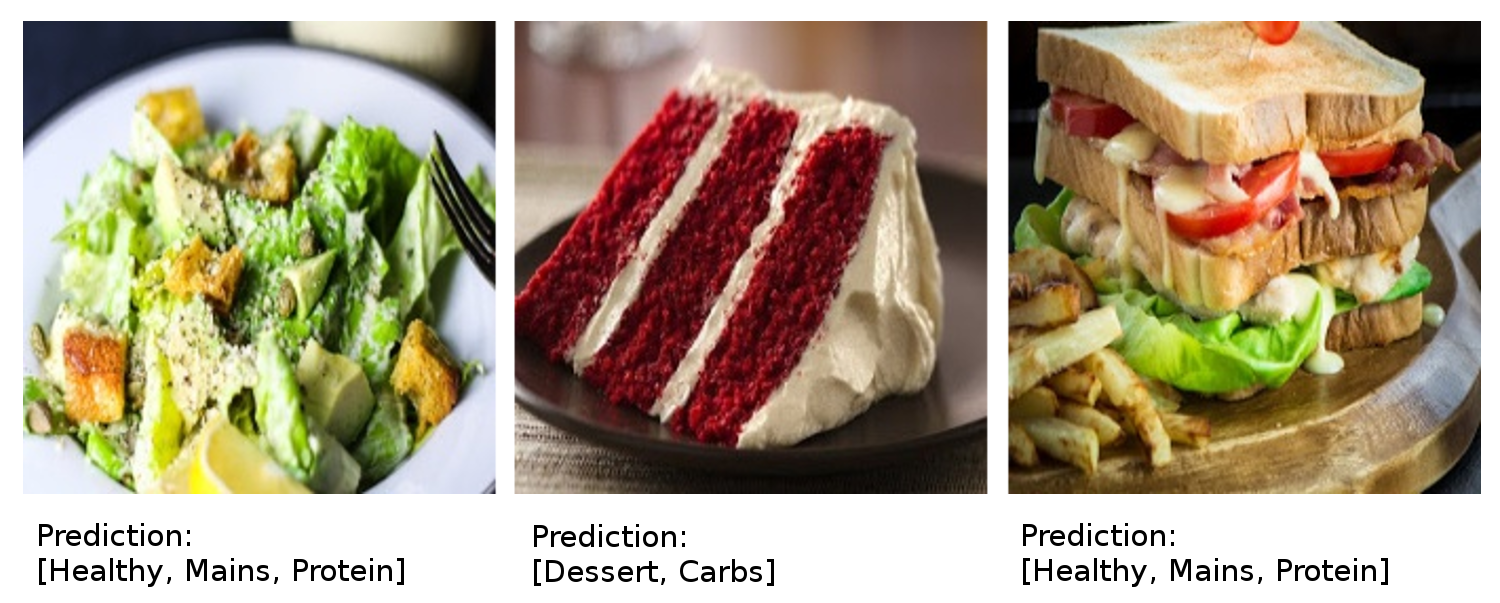Multilabel-Classification
Repository containing Keras code for the blog post titled "How to Perform Multi Label Classification using Deep Learning". You can checkout the blog post here.
Using Keras
This section lists out the steps involved in training a Keras model (with TensorFlow backend) for Multi Label Classification.
Method 1: Google Colab
- You can explore this notebook on Colab to directly experiment with training the models.
Method 2: Local Setup
Follow these steps to train and use a model for Multilabel Classification. You can also directly use a sample trained model (mobilenet.h5) without training, which can be downloaded from here (skip to Step 4 in that case).
Step 1: Clone the Repo
git clone https://github.com/thatbrguy/Multilabel-Classification.git
cd Multilabel-ClassificationStep 2: Download the Dataset
- Download data.tar.gz and place it in the current directory.
- Extract the dataset using
tar -xzvf data.tar.gz - Move the contents of
./data/keras/to the current directory by usingmv ./data/keras/* ./
Step 3: Train the Model
- Run
train.py --model ResNet50to train the model. - The
--modelargument can take one amongResNet50,MobileNet,DenseNet121orXception.
Step 4: Inference
- Run
predict.py --image PATH_TO_FILE --saved_model PATH_TO_h5to obtain a prediction once the model is trained. PATH_TO_FILErefers to the path of the image.PATH_TO_h5refers to the path of the h5 file.
Using Nanonets
This section lists out the steps involved in training a Nanonets model for Multi Label Classification.
Step 1: Clone the Repo
git clone https://github.com/thatbrguy/Multilabel-Classification.git
cd Multilabel-Classification/nanonetsStep 2: Get your free API Key
Get your free API Key from http://app.nanonets.com/user/api_key
Step 3: Set the API key as an Environment Variable
export NANONETS_API_KEY=YOUR_API_KEY_GOES_HEREStep 4: Create a New Model
python ./code/create_model.py_Note: This generates a MODEL_ID that you need for the next step
Step 5: Add Model Id as Environment Variable
export NANONETS_MODEL_ID=YOUR_MODEL_ID_Note: you will get YOUR_MODEL_ID from the previous step
Step 6: Upload the Training Data
- Download data.tar.gz and place it in the current directory.
- Extract the dataset using
tar -xzvf data.tar.gz - Move the contents of
./data/nanonets/to the current directory by usingmv ./data/nanonets/* ./ - Run
python ./code/upload_training.pyto upload the data.
Step 7: Train Model
Once the Images have been uploaded, begin training the Model
python ./code/train_model.pyStep 8: Get Model State
The model takes ~2 hours to train. You will get an email once the model is trained. In the meanwhile you check the state of the model
python ./code/model_state.pyStep 9: Make Prediction
Once the model is trained. You can make predictions using the model
python ./code/prediction.py PATH_TO_YOUR_IMAGE.jpgSample Usage:
python ./code/prediction.py ./multilabel_data/ImageSets/2_my_caesar_salad_hostedLargeUrl.jpg